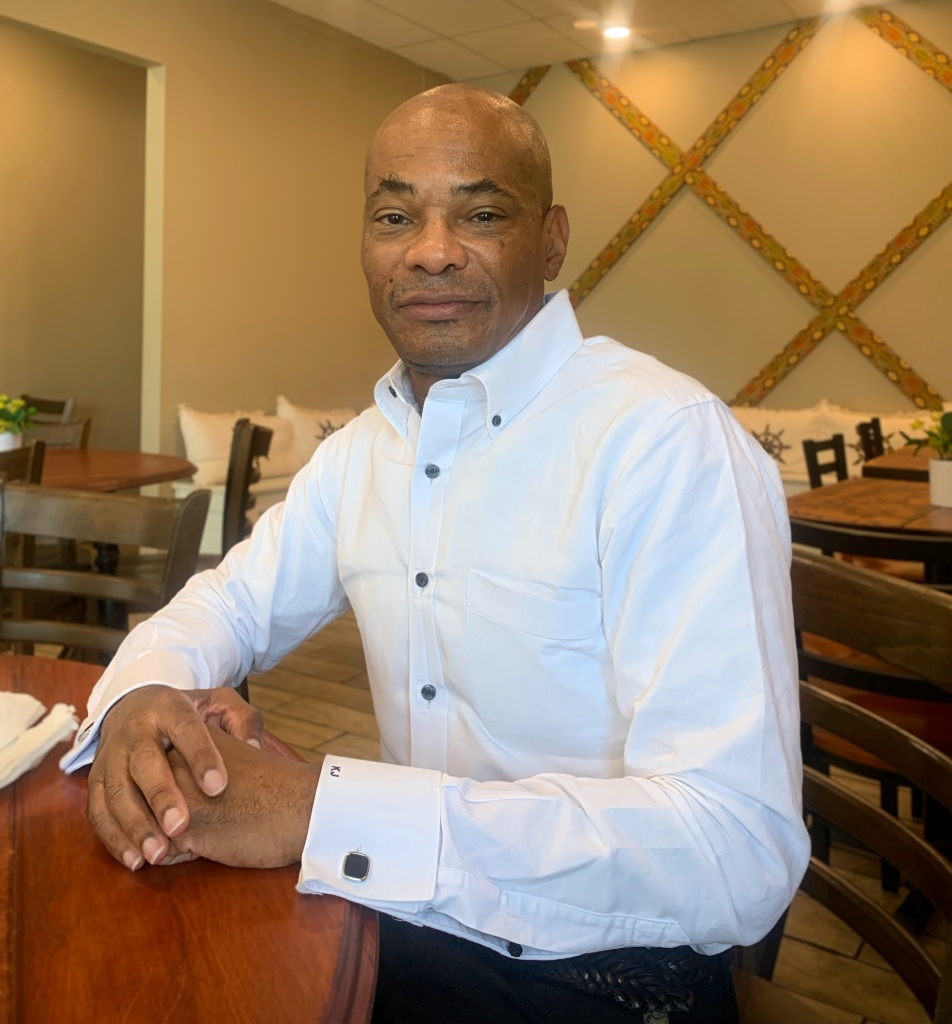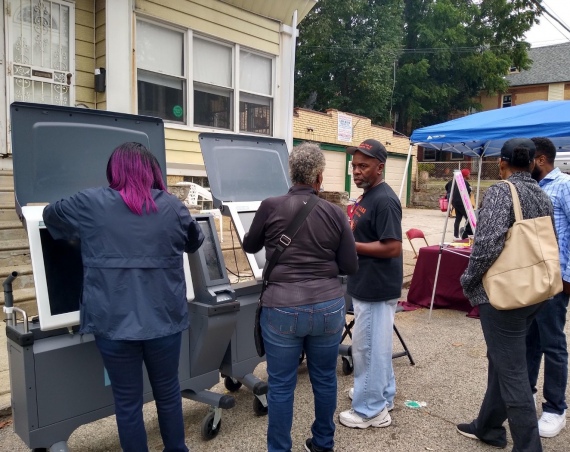
Kenneth Johnson, president of PhilaNOMA. (GIH | Maleka Fruean)
In 2023, the National Council of Architectural Registration Boards (NCARB) reported that 2.28% of licensed architects working in the U.S. were Black.
Kenneth Johnson, a Germantown resident and president of the Philadelphia Chapter of the National Organization of Minority Architects, or PhilaNOMA, knows that data well.
Johnson, who owns and operates his own architectural firm, Architecture, Urban Design, and Policy, L.L.C, and also has a law degree from the University of Pennsylvania, wants to ensure that the city of Philadelphia and neighborhood developers consider smaller and Black-owned architecture firms when they move forward on projects.
Johnson grew up in the Strawberry Mansion neighborhood of Philadelphia and always had a talent for drawing, which his teachers and family both encouraged. He learned about architecture when a counselor told him that drawing could be a part of art or architecture. It was the first time he had heard about the field. He ended up in Chicago, where he got his undergraduate degree in architecture at the Illinois Institute of Technology.
It’s where he first encountered NOMA. It provided him with a community in a space that was primarily white and with what felt like little in common with him. He remembers only four or five Black students out of about 100 in his program.
Johnson said his whole community was African American growing up in Philadelphia, including the schools he attended. Then, he went to college, which was a totally different experience. After walking into a NOMA event, Johnson knew he had found a community away from home. He saw events and spaces that were Black and working on the same things he was working on.
“We came together, and we did stuff to help us. To help us achieve and graduate and stuff like that. If somebody was having trouble, we helped them out,” said Johnson.
When he returned to Philadelphia as a professional architect, he knew he wanted to continue his relationship with the organization. PhilaNOMA hopes to support architects throughout their lives, from middle and high schoolers getting introduced to architecture at career days to helping college students with portfolio reviews and shadowing professional architects to recent graduates preparing and taking the licensing exams, building a community around them and talking about problems at firms, to older professionals giving back to the community and advising younger architects.
The website said PhilaNOMA began “to provide a voice for design professionals who previously had little say in the development of Philadelphia’s communities.”
Johnson explained that part of the reason he tries to attend government meetings is to continue to highlight Black architects, their firms, and their work, which historically has often been overlooked in bigger development projects throughout the city.
He cites redlining and a lack of job opportunities as part of the reason Black architects have historically had fewer connections to resources and people in power who can help their firms secure bigger contracts. He says this is slowly changing, but it is still difficult to change in one lifetime.
One community meeting he attended recently was the May 29th Community State Budget Briefing meeting in Germantown. He attended it to ensure elected officials knew about PhilaNOMA and considered Black architects when developing Philadelphia’s neighborhoods.
Ian Smith, founding principal of IS-DG and vice president of PhilaNOMA, says he joined PhilaNOMA initially to gain more legitimacy and advocacy in his field. He understands why Johnson would want to bring awareness to Black-owned architecture firms.
Smith says Black architects and Black-owned architecture firms need to be given a chance to make top decisions in larger contracts “by having straightforward advocacy that runs us beyond the people that don’t give a crap about whether or not more African Americans are working in that space or not.”
Smith has been working in the field for 30 years, and his firm works on various projects throughout the city. Johnson also has clients throughout the city. Many are homeowners, small business owners, and small-town developers, and many of his projects are in majority-Black neighborhoods in the city.
“I get satisfaction because I’m providing professional services for a segment of the population that, without somebody like me here, would not be able to access because it would be too expensive or the professional that they’re dealing with won’t take them seriously because they’re just not a client that can bring in other clients or bigger clients or will have more projects down the line,” said Johnson.
He continued, “It’s just a one-off, and it’s just not that important (to them). But to me, because it’s my community and it’s people that look like me, I take it seriously and I listen to them, and I do my best for them to have the most professional services that’s out there.”
Johnson stresses the importance of not only local contractors for larger developmental projects but also local and smaller Black-owned architecture firms.
Karen Anderson, founding principal of KRN Architecture LLC and a PhilaNOMA member-at-large, says it’s important that larger contracts and larger firms partner with smaller local firms, whether Black-owned or not. Anderson’s work focuses on sustainability and circularity in architecture, and she believes working with smaller firms brings those tenets to the community.
“A lot of times, it’s the small firm that does things like support education programs in their community for elementary school children to become architects,” said Anderson.
Part of Anderson’s work in PhilaNOMA is helping with their summer camp, which brings architecture programs to elementary and middle schools. It is one of the only chapters in the country to work with younger students. She knows how important it is because it was a program like that when she was younger that introduced her to the field of architecture.
She continued, “Again, I go back to that circularity. I love that we’re all connected. So it’s important for those large firms to connect to the small and medium firms which connect to the local communities. There’s a circularity there.”
Johnson is proud of how PhilaNOMA supports student chapters at colleges like Temple University and Jefferson University, has an active membership, and collaborates with the National Society of Black Engineers (NSBE) and organizations of local Black doctors to do joint activities. They have a yearly celebration and award ceremony. All the work as a member builds a community and amplifies what everyone does in architecture.
Beyond highlighting their work and firms, Johnson says it feels good to help people get into architecture.
“I like going to career days and stuff like that because they get to know that architecture is out there. That’s a possibility. And once they know that, then they have to see people that look like them doing it. That’s why I like going to career days and talking to the students and… the financial rewards, they have to see that,” said Johnson.
To learn more about PhilaNOMA and their work, check out their programming on their website.



